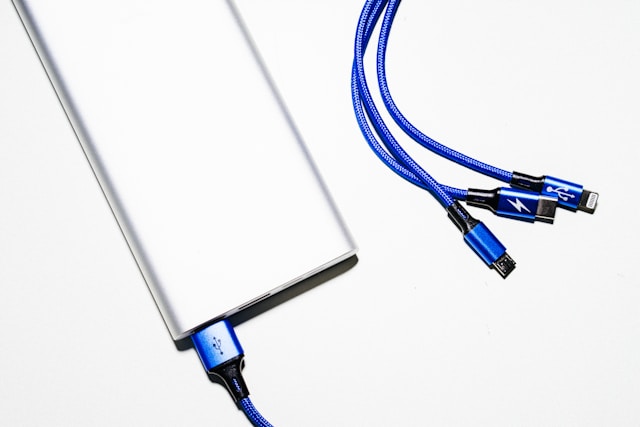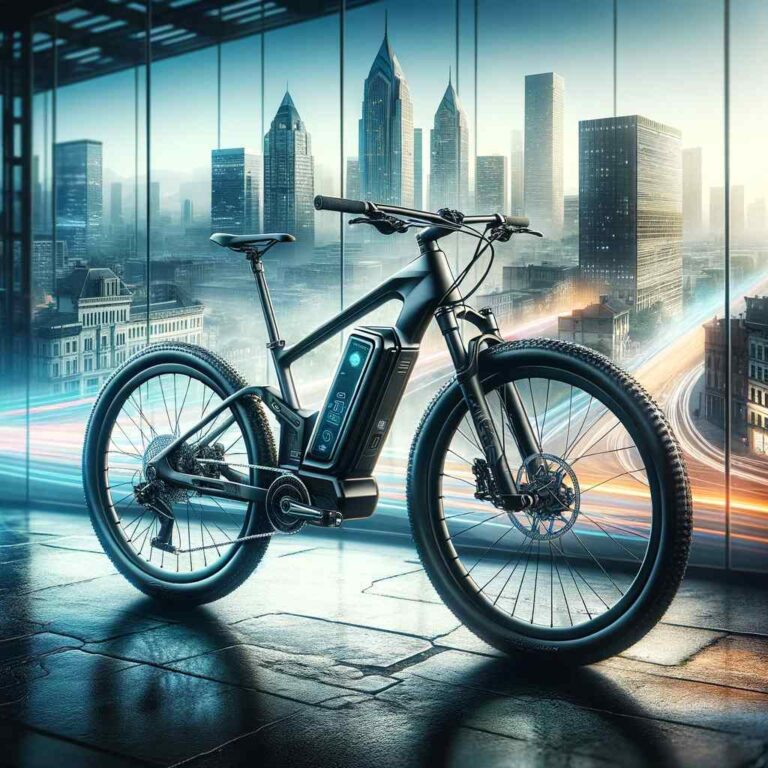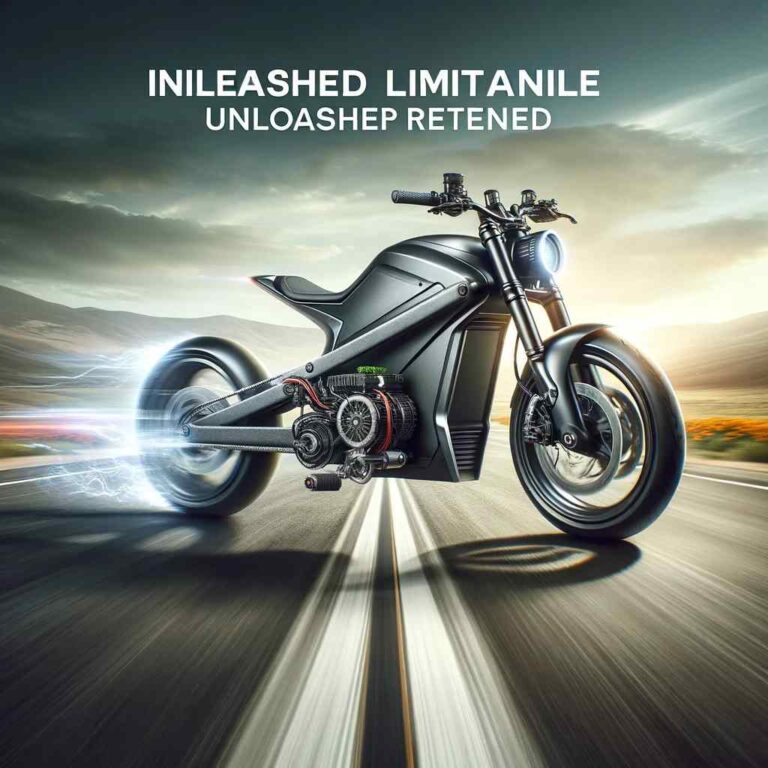Are Helmets Mandatory For All Ebikes?
Electric bikes, or e-bikes, are taking the world by storm. These pedal-assisted cycles offer a fun, eco-friendly way to get around, whether you’re cruising for exercise, zipping to work, or exploring new trails. With their electric motors providing a helpful boost, e-bikes are making cycling more accessible to people of all ages and fitness levels.
However, with this growing popularity comes the crucial question of safety. While e-bikes offer a thrilling ride, they can also reach speeds that put riders at risk in the event of a fall or accident. That’s where helmets come in – a simple piece of equipment that can make a world of difference in protecting your head from serious injury.
Beyond the safety aspect, there’s also the legal side of things to consider. Helmet laws for e-bikes vary depending on your location, and violating these laws can result in fines.
So, before you hop on your e-bike and hit the road, let’s delve into the world of e-bike helmets. We’ll explore the legal requirements, highlight the safety benefits, and offer tips on choosing the right helmet for a comfortable and secure ride. Buckle up (or rather, put on your helmet!) and let’s get started!
Key Takeaways
- Helmet Laws Vary: E-bike helmet laws differ by state (USA focus). Check your local regulations to see if there are any mandatory helmet requirements for e-bikes, especially for riders under a certain age.
- Safety First, Always: Regardless of legal requirements, wearing a helmet is the smartest decision for any e-bike rider. Even a slow-speed fall can lead to serious head injury.
- Consider E-Bike Classifications: In some regions, helmet laws might be tied to the e-bike class (e.g., Class 1, 2, 3) and its potential speed.
- Protect Your Investment: E-bikes can be an investment, and protecting yourself with a helmet is a small price to pay for safety and peace of mind.
- Comfort is Key: Choose a helmet that’s comfortable for longer rides. Look for good ventilation and adjustable straps for a snug fit.
- Certification Matters: Make sure your helmet meets safety standards set by a reputable organization like the CPSC (US).
- Visor Options for Glasses Wearers: If you wear glasses, consider a helmet with a removable visor or one designed to accommodate glasses underneath.
Understanding E-Bike Classifications (for Context)
E-bikes come in different flavors, and understanding these classifications can be helpful, especially when it comes to safety and potentially, helmet laws (though regulations can vary by region). Here’s a quick breakdown of the three main e-bike classes:
- Class 1 E-bikes: These are considered the most similar to traditional bicycles. They offer pedal-assist only, meaning the motor kicks in and provides a boost only when you’re actively pedaling. Class 1 e-bikes typically have a maximum assisted speed of 20 mph (32 km/h).
- Class 2 E-bikes: These e-bikes offer both pedal-assist and throttle operation. The pedal-assist function works similarly to Class 1 bikes, but they also have a throttle that allows you to accelerate without pedaling, reaching a maximum assisted speed of 20 mph (32 km/h) just like Class 1.
- Class 3 E-bikes: These are the speed demons of the e-bike world (at least when it comes to these classifications). They offer pedal-assist only, but with a higher maximum assisted speed of 28 mph (45 km/h).
It’s important to note that these classifications are based on speed and motor operation, and not necessarily on overall power. While Class 3 e-bikes can reach higher speeds, they still require pedaling for motor assistance.
Now, how do these classifications relate to helmet laws? In some regions, helmet laws might differ depending on the e-bike class. For example, some areas might require helmets for all e-bikes regardless of class, while others might only mandate them for Class 2 and 3 due to their higher potential speeds.
Remember: Even if your local laws don’t require a helmet for your specific e-bike class, prioritizing safety is always a good call. Helmets are essential for protecting your head in the event of a fall or collision, regardless of speed.
RELATED CONTENT – Electric Bike Safety Commuting Gear & Accessories
RELATED CONTENT – What Safety Features Does Have an Electric Commuter Bike Have?
Mandatory E-Bike Helmet Laws: Buckle Up Depending on Your Location (USA Focus)
E-bike helmet laws can be a bit of a puzzle box – they vary significantly from state to state across the US. While there’s no national mandate for e-bike helmets yet, some states are taking the initiative to implement regulations.
Here’s where understanding e-bike classifications (covered in Section II) can be helpful. In some cases, helmet laws might be tied to the e-bike class and its potential speed.
State-by-State Breakdown:
Since e-bike regulations are constantly evolving, it’s crucial to stay updated on the specific laws in your area. A great resource for this is the National Conference of State Legislatures (NCSL), which provides a comprehensive breakdown of state-by-state electric bicycle laws: National Conference of State Legislatures – Electric Bike Laws: https://www.ncsl.org/transportation/state-electric-bicycle-laws-a-legislative-primer.
This NCSL resource allows you to easily see if your state has any helmet requirements for e-bikes, and if so, for which age groups and potentially, which e-bike classifications.
Focus on Riders Over 16:
Keep in mind that many states, even if they don’t have specific e-bike helmet laws, often have existing bicycle helmet laws that apply to e-bikes as well. These laws typically require riders under a certain age (often 16 or 18) to wear helmets while riding any bicycle, including e-bikes.
Before cruising on your e-bike, take a moment to check your state’s specific helmet laws. The NCSL resource is a valuable tool, but you can also find information on your state’s Department of Motor Vehicles (DMV) website or by contacting your local law enforcement agency. Remember, even if the law doesn’t require it, wearing a helmet is always the safest choice for any e-bike rider, regardless of age or location.
RELATED CONTENT – Do Electric Bikes Need to Be Registered?
RELATED CONTENT – Do You Need a License to Ride an Electric Bike?
E-Micro Mobility Regulations and Potential Fines
E-bikes aren’t the only electric micro-mobility game in town. Electric scooters (e-scooters) are another popular option, and the question of helmet use applies to them as well. Similar to e-bikes, helmet laws for e-scooters vary by location. Some areas mandate helmets for all e-scooter riders, while others might have age restrictions or regulations based on scooter power or speed limitations.
Here’s the thing – it’s always best to check the specific laws in your area, just like with e-bikes. You can often find this information on your city’s government website or by contacting your local Department of Transportation (DOT).
The Ticket Factor: Ouch!
Not wearing a helmet when required can result in fines or tickets, and that can put a damper on your e-ride experience. Can you get a ticket for not wearing a helmet on an ebike in the USA?
Whether you can get a ticket for not wearing a helmet on an e-bike in the USA depends on the specific laws of your state and sometimes even your locality. Here’s a breakdown:
- State Laws: Many states have helmet laws, but these laws often differ for e-bikes compared to traditional bicycles.
- Some states require helmets for all e-bike riders regardless of age.
- Others require helmets only for riders under a certain age (e.g., 16 or 18).
- Still others have no helmet requirements for e-bikes at all.
- Local Laws: In addition to state laws, some cities and counties may have their own helmet laws for e-bikes.
Here are some resources to help you find the specific laws in your area:
- State Bicycle Helmet Laws: https://explorethousand.com/blogs/journal/get-to-know-the-bike-helmet-laws-by-state
The truth is, depending on your location, violating helmet laws for e-bikes or e-scooters could lead to fines ranging from $25 to hundreds of dollars. Is a ticket worth the risk of a serious head injury? Absolutely not!
Beyond the Law: Safety First
While legal repercussions are a factor to consider, the most important reason to wear a helmet boils down to safety. Both e-bikes and e-scooters can reach speeds high enough to cause serious injuries in a fall or collision. A helmet is your first line of defense against head trauma, protecting you from potential life-altering consequences.
So, the next time you grab your e-bike or e-scooter, think safety first. Check your local regulations, but more importantly, make wearing a helmet a non-negotiable part of your e-riding routine.
RELATED CONTENT – Ebike Rules of the Road: Where Can You Legally Ride an Ebike?
Why Helmets Are Your Best Friend on E-Bikes: Safety Benefits You Can’t Ignore
E-bikes are a fantastic way to get around, but even with their pedal-assist or throttle power, accidents can happen. And when they do, head protection becomes paramount. Here’s why wearing a helmet is essential, regardless of how slow you think you might be going:
- Head Injuries Aren’t Speed-Dependent: You might think a slow-speed e-bike tumble wouldn’t be a big deal, but even a minor fall can lead to serious head trauma. According to a study by the National Highway Traffic Safety Administration (NHTSA): [invalid URL removed], head injuries were a factor in over 70% of all fatal bicycle crashes in 2020. E-bikes may offer some motor assistance, but they are still bicycles, and the risks associated with falls are similar.
- Statistics Paint a Clear Picture: The Centers for Disease Control and Prevention (CDC) reports that in the US alone, over 500,000 people visit emergency rooms each year for bicycle-related injuries, with head injuries being a major concern. E-bikes are becoming increasingly popular, and with that rise, experts predict a potential increase in e-bike accidents as well. Wearing a helmet is a simple yet crucial step to reduce the risk of severe head trauma.
- Comfort Counts for Commuter E-Bikes: When it comes to e-bikes, especially for commuting, comfort is key. Look for helmets designed for good ventilation to keep you cool on your rides. Features like adjustable straps and a secure fit ensure a comfortable ride without compromising safety.
Remember, the best helmet is the one you’ll wear consistently. There are various e-bike helmet options available, so finding one that’s both safe and comfortable is crucial for regular riders.
Debunking the Myth: There’s No Substitute for a Helmet
We understand that some riders might be exploring “alternatives to helmets” as indicated by the search query. Perhaps a helmet seems bulky or uncomfortable, or maybe there’s a desire to feel the wind in your hair. However, it’s important to be upfront – there are currently no safe alternatives to helmets when it comes to e-bike riding.
While a bandana or cool hat might look stylish, they offer zero protection in the event of a fall. Your brain is your most precious asset, and a helmet is the only proven way to significantly reduce the risk of serious head injury.
Think about it this way: investing in a good helmet is a small price to pay for protecting your health and well-being. After all, wouldn’t you rather enjoy the wind in your hair while cruising on your e-bike knowing you’re properly protected?
Prioritizing Safety and Responsible E-Riding
At the end of the day, safety should always be your top priority when riding an e-bike. This means following traffic laws, practicing responsible riding habits, and of course, wearing a properly fitted helmet. By taking these steps, you can minimize risks and ensure a safe and enjoyable e-bike experience.
RELATED CONTENT – 14 Crucial Ebike Safety Tips Every Rider Should Know
Choosing the Right E-Bike Helmet: Safety and Comfort on Two Wheels
Finding the right e-bike helmet goes beyond just basic protection. You want a helmet that’s comfortable for longer rides, offers features suited to e-bike riding, and most importantly, fits you securely. Here’s what to consider when choosing your e-bike helmet:
- Comfort is Key: E-bike rides can extend for miles, so ensure your helmet is comfortable. Look for features like good ventilation to prevent overheating, and adjustable straps for a snug, but not constricting, fit.
- Certification Matters: Make sure your chosen helmet meets the safety standards set by a reputable organization. In the US, look for helmets with CPSC (Consumer Product Safety Commission) certification. This ensures the helmet has undergone rigorous testing to meet safety benchmarks.
- Visor for Prescription Glasses: If you wear glasses, consider a helmet with a built-in visor that can be flipped up or down as needed. Alternatively, some helmets are designed to comfortably accommodate prescription glasses underneath.
Top 5 Ebike Helmets

1. Thousand Chapter MIPS
- Overview: The Thousand Chapter MIPS is a stylish and well-ventilated helmet with a built-in rear light for added visibility. It comes in a variety of colors to suit your taste.
- Features: MIPS brain protection system, lightweight design, vegan leather straps, magnetic buckle closure, built-in rear light.
- Pros: Comfortable, stylish, good ventilation, easy to use magnetic buckle.
- Cons: A bit on the pricier side, visor not ideal for all prescription glasses.
- Price Range: $145 – $160
- Where to Buy: https://explorethousand.com/
2. Specialized Mode
- Overview: The Specialized Mode is a great option for e-bike commuters. It features additional back-of-head protection and an NTA 8776 e-bike certification for certain European markets.
- Features: MIPS brain protection system, additional rear head coverage, NTA 8776 e-bike certification (Europe), integrated visor.
- Pros: Excellent head protection, good ventilation, NTA certification (Europe), integrated visor.
- Cons: Visor might not be suitable for all prescription glasses, limited color options.
- Price Range: $49.99 – $120.00
- Where to Buy: Specialized.com

3. Bell Super 3R MIPS
- Overview: The Bell Super 3R MIPS is a versatile helmet that can be converted from a full-face helmet with a chin bar to an open-face helmet for increased ventilation. A great option for riders who tackle both trails and commutes.
- Features: MIPS brain protection system, removable chin bar, adjustable visor, multiple vents for airflow.
- Pros: Versatile design, good ventilation with removable chin bar, comfortable fit.
- Cons: Bulkier design compared to some other options, not ideal for strictly commuting due to the chin bar.
- Price Range: $191.90 – $240.00
- Where to Buy: Bell Helmets https://www.bellhelmets.com/
E-Bike Helmets with Visor for Prescription Glasses:
Finding a helmet that perfectly accommodates prescription glasses can be tricky. Here are 4 recommendations that offer visor or design features suitable for glasses wearers:

LIVALL BH51T MIPS
The LIVALL BH51T MIPS is a feature-packed e-bike helmet designed for urban commutes and everyday rides. It prioritizes safety with MIPS technology and certifications while offering smart features like integrated lights and fall detection.
Features:
- MIPS Brain Protection System: Reduces rotational forces on impact, potentially lowering the risk of brain injury.
- International Safety Certifications: Meets CPSC 1203, EN1078, AS/NZS 2063 for e-bike use.
- LED Rear Light with Turn Signals: Improves visibility and signaling intentions to traffic.
- Remote Control Handlebar Mount: Allows for easy turn signal activation while riding.
- Fall Detection & SOS Alert: Helmet sensors detect a fall and send an SMS alert with GPS location to pre-set emergency contacts after 90 seconds of inactivity.
- Long Battery Life: Offers extended rides without worrying about recharging.
- Adjustable Head Circumference: Ensures a snug and comfortable fit.
Pros:
- Safety Focused: MIPS technology and certifications provide peace of mind.
- Smart Features: Integrated lights, turn signals, and fall detection enhance safety and convenience.
- Comfortable Fit: Adjustable design ensures a snug and secure fit.
Cons:
- Limited Visor: While it offers some sun protection, it might not be ideal for all prescription glasses wearers.
- App Not Included: Pairing with the LIVALL app for advanced features may require an additional purchase.
Price Range: $89
Where to Buy:
- LIVALL official website: https://livall.com/products/bh51t-urban
- Online retailers like Amazon

Smith Optics Dispatch MIPS Helmet
- Overview: An E-bike certified helmet with a visor, designed for comfort and increased visibility during commutes.
- Features: MIPS brain protection system, Koroyd impact protection, VaporFit adjustable fit system, integrated rear LED light, 17 vents for ventilation.
- Pros: Comfortable, safe, good ventilation, handy rear light.
- Cons: A bit on the pricier side.
- Price Range: $80 – $350 https://www.thebackcountry.com/snow/accessories/helmets/
- Where to Buy: Backcountry.com

ABUS Urban Pedelec 2.0 Ace Bicycle Helmet
- Overview: A feature-rich helmet with a visor, well-suited for urban e-bike riding.
- Features: Visor, LED rear light, removable rain cap, bug net, FidLock magnetic buckle, adjustable fit system.
- Pros: Lots of great features, nice looking, rear light.
- Cons: Price can vary depending on retailer.
- Price Range: $135.00 -$169.99
- https://www.amazon.com/ABUS-Pedelec-Urban-Helmet-Certified/dp/B07WRT7H62
- Where to Buy: EM Moto

Lumos Ultra E-Bike Smart Helmet
- Overview: A high-tech option with a retractable faceshield, designed for e-bikes and scooters.
- Features: Integrated front and rear LED lights, turn signals with wireless remote, retractable faceshield, app control for light customization and ride tracking.
- Pros: Most technologically advanced helmet on this list, with great safety features and visibility.
- Cons: Most expensive option on this list.
- Price Range: $249.95
- Where to Buy: Amazon.com
Additional Considerations:
- Visor vs. Faceshield: Some helmets come with a visor, while others have a retractable faceshield. Faceshields offer more protection from the elements but may not be ideal for prescription glasses wearers.
- Ventilation: Look for a helmet with good ventilation to keep your head cool and comfortable during rides.
- Fit: A properly fitted helmet is essential for safety and comfort. Make sure to try on the helmet before you buy it.
FAQs
Technically, yes, a DOT-approved motorcycle helmet would offer protection while e-biking. However, there are some considerations:
Motorcycle helmets are generally heavier and bulkier than e-bike helmets, which can be uncomfortable for longer rides.
Motorcycle helmets often have less ventilation than e-bike helmets, which can make you hot on a warm day.
E-bike helmets might offer features more suited to e-biking, such as removable visors for glasses wearers.
So, while a motorcycle helmet can provide protection, a properly fitted e-bike helmet might be a more comfortable and practical choice.
E-bike helmets, like any helmet, should be replaced after a serious impact or crash. Even if there’s no visible damage, the helmet’s internal components might be compromised. It’s also recommended to replace your helmet every 5-7 years due to normal wear and tear.
E-bike helmet laws vary significantly by location. While some areas have mandatory helmet laws for all e-bike riders, others might have age restrictions or regulations based on e-bike classifications.
It’s important to check the specific laws in your city or state. Here are some resources to help you get started:
National Conference of State Legislatures (NCSL) – Electric Bike Laws: https://www.ncsl.org/transportation/state-electric-bicycle-laws-a-legislative-primer
Your city’s government website or Department of Transportation (DOT) website.
Conclusion
E-bikes are a fantastic way to get around, offering a fun, eco-friendly, and convenient transportation option. But with that convenience comes the responsibility to prioritize safety. Wearing a properly fitted helmet is the simplest and most effective way to protect yourself from serious head injury in the event of an accident.
This guide has hopefully equipped you with the knowledge to choose the right e-bike helmet for your needs. Remember, comfort, safety features, and proper certification are all crucial factors to consider. So, before you hit the road, make sure you’re geared up for a safe and enjoyable ride!
We encourage you to leave a comment below and share your e-bike riding experiences! Do you have any questions about e-bike helmets or safety tips to share with fellow riders? Let’s create a conversation around safe and responsible e-biking!
Now get out there, explore your world on your e-bike, and most importantly, ride safe!
External Sources
Throughout this blog post, we’ve relied on information from credible sources to ensure accuracy and provide valuable insights on e-bike helmets and safety. Here’s a list of the external sources referenced:
- National Highway Traffic Safety Administration (NHTSA): https://www.nhtsa.gov/book/countermeasures-that-work/bicycle-safety (Used for statistics on head injuries in bicycle crashes)
- Centers for Disease Control and Prevention (CDC): https://www.cdc.gov/transportationsafety/bicycle/index.html (Used for statistics on bicycle-related injuries)
- Consumer Product Safety Commission (CPSC): https://www.cpsc.gov/ (Used for information on helmet certification standards)
- National Conference of State Legislatures (NCSL): https://www.ncsl.org/transportation/state-electric-bicycle-laws-a-legislative-primer (Used as a resource for state-by-state e-bike laws)
Kristina Grant is not just an enthusiast but a true authority on electric bikes. Nestled in the coastal beauty of Virginia, Kristina has found the perfect backdrop for her passion for electric biking. As a dedicated wife and homeschooling mom, her life revolves around family, faith, and the thrill of adventure.
Originally hailing from Ohio, Kristina's journey with electric bikes began as a curiosity and quickly evolved into a deep expertise. Her blog is a testament to her love for electric biking, combining her fascination for eco-friendly transportation with her coastal lifestyle.
When she's not cruising the beach on her electric bike, you'll find Kristina indulging in her other loves: long walks along the shore, getting lost in a good book, and cherishing moments with her loved ones. With a heart as big as her love for animals, especially cats, Kristina brings a unique perspective to the electric bike world, grounded in her strong faith in God and her dedication to a sustainable lifestyle.
Through her blog, Kristina shares her extensive knowledge of electric bikes, offering valuable insights, tips, and recommendations to fellow enthusiasts. Whether you're a seasoned rider or a newcomer to the electric bike scene, Kristina's blog is your go-to source for all things electric biking, fueled by her passion, expertise, and the scenic beauty of coastal Virginia.







